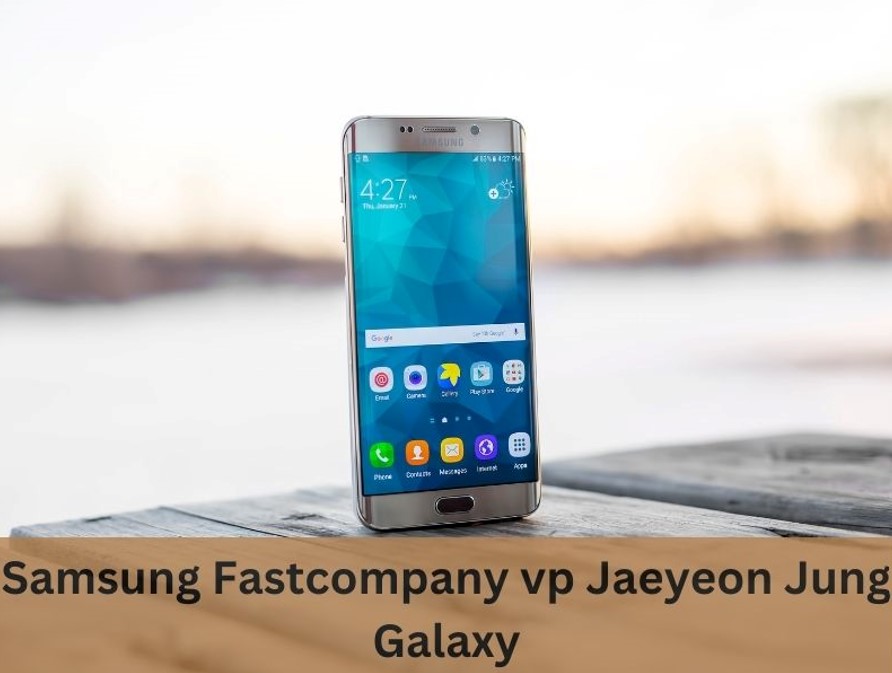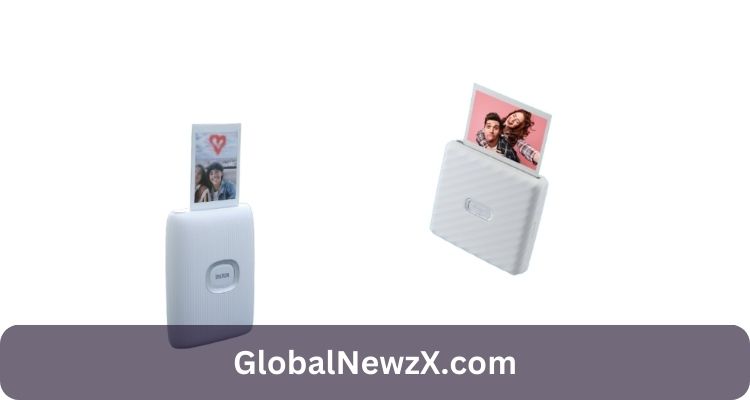Samsung is one of the most innovative companies when it comes to technological innovation. Their design process starts with a deep dive into customer needs and market trends.
Their design team uses empathy, visualization, and experimentation to help them build support for radically changing products. In this interview, Samsung fastcompany vp jaeyeon jung galaxy discusses how they’re taking this approach to the next level.
Samsung’s vision for a better future together
Samsung’s vision for a better future together is about putting people at the centre of an inclusive, connected technology ecosystem. This involves delivering products and services that are tailored to suit the needs of all users in diverse societal situations.
This is done through a combination of a corporate vision and mission statement that inspires the world and leads it to global societal improvement. The company has also established a strategy to enhance the impact of its technological products on societies around the world and contribute to social prosperity.
The main pillars of this strategy include ‘Everyday Sustainability’, ‘Customised Experiences to Empower Users’ and ‘Seamless Connectivity’. The vision was introduced at CES 2022 in Las Vegas and aims to transform the way we interact with technology for a healthier, more connected world.
Under ‘Everyday Sustainability’, Samsung is committed to low-impact manufacturing, footprint reducing packaging and more sustainable customer experiences. It is also a strong supporter of responsible disposal after the end of product life cycles.
For example, Samsung is working to reduce carbon emissions through its screens and mobile devices by 700,000 tons. The company has also committed to using 30 times more recycled plastics in its visual display business and home appliances over the next three years.
In addition, it is focusing on energy efficiency as a key pillar of its sustainability strategy. This is reflected in its smart televisions, smartphones, memory, home appliances and 5G radio network chipsets that use energy-saving technologies and help customers save on power bills.
The company also has an eco-conscious approach to design and is making their green technologies open source so that others can benefit from them. This includes a new SolarCell Remote that eliminates battery wastage by integrating a solar panel into the remote control.
It also aims to bring the connected experience to more people through features like SmartThings Home Monitor and SmartThings Pet Care. These features allow users to track and remotely control their homes.
These devices will be incorporated into new Samsung TVs, Family Hub refrigerators and Smart Monitors in 2022. They will make it easier for consumers to stay connected and enjoy a more intelligent, personalized lifestyle.
The Cosmic System SmartTag
The Cosmic System SmartTag is designed to help you find your keys, phone, or other easily-lost objects, and it works in conjunction with Samsung’s smartphone platform. You simply attach the device to your keys, purse, or other items and it will use Bluetooth 5.0 LE to connect with your phone and then track its location through SmartThings Find.
It’s a tiny device that’s about the same size as most TWS earbuds’ charging cases, so it won’t stick out like a sore thumb. It weighs 13g and measures 38mm square, making it easy to throw into your pocket without creating any bulk.
In addition to tracking, the Cosmic SmartTag also provides item data and offers shopping guidance. By pairing the device with the Shop-Igniter application, shoppers can access a virtual shopping assistant on their phones to guide them through purchases for garments, jewelry, food, and household items.
There are some limitations to this service, however. For starters, it’s based on Bluetooth connections and thus can struggle to pick up signals from nearby Galaxy devices in places with thick walls or heavy metal surfaces. In more remote locations, the device will only be able to detect Samsung devices within about 15 metres of it.
Thankfully, the tag can still be detected and tracked by other Samsung devices in the area via its Galaxy Find Network. This happens in the background, anonymously, and is encrypted to prevent anyone from identifying you.
The main caveat here is that this service requires Samsung’s SmartThings app to work – which means it will only be compatible with Samsung smartphones. While this is a huge advantage over rival trackers, it does limit the user base for this service.
As such, I can’t recommend it to anyone outside of the Samsung ecosystem unless you want to make sure your tag is always connected to your phone and in range – or if you’re lucky enough to get a free SmartThings tag along with a Samsung smartphone. It’s a shame, really, that the service is only supported on Galaxy devices because it could prove to be a useful feature.
SmartThings Find
The SmartThings Find feature is a nifty little addition to Samsung’s popular home automation platform. It uses Bluetooth Low Energy (BLE) and UWB technologies to help users find their Galaxy smartphones, tablets, smartwatches, earbuds, and accessories, all from within the Samsung SmartThings app.
It’s easy to use, too – just open the SmartThings app on your phone, tap the Find tab, and enter your device’s location. Then, you can share that information with family or friends if you need help finding the item.
If you have a large number of devices in your SmartThings ecosystem, the SmartThings Find app has an organizational feature that lets you create rooms for each one. There are also separate tabs for each room, making it easier to find the device you’re looking for.
There are also a few other features in SmartThings Find that make it a useful addition to the Samsung home automation ecosystem. First, it can detect unknown Galaxy SmartTag trackers and alert you if they are moving nearby. That helps prevent stalkers from using them to monitor your movements or follow you around like Apple’s rumored AirTags.
Second, it can locate your devices when they are offline. That’s important when you’re away on vacation or camping, for instance. You can even opt in for a BLE signal to be sent out when the device is disconnected, letting people know that you’re missing it.
You can invite up to 19 members to join the SmartThings Find network, making it easier for family and friends to help find your lost devices. That’s an exciting feature that would be really helpful in a sticky situation, especially if you don’t have a Google account to use the company’s Find My Mobile service.
Finally, Samsung has also rolled out an anti-stalking feature to its SmartThings Find platform that can detect and alert users if they’re being stalked by someone with an unknown SmartTag. It’s a little similar to a feature in iOS and iPadOS 14.5 beta 3 that alerts you if anyone has slipped an AirTag into your bag or vehicle and is tracking your movements.
The C-Labs
Samsung’s business model is built on creating products that inspire excitement, capture the imagination, and improve people’s lives. As a result, it needs to be lean and agile to remain competitive. It also must be able to adapt to industry trends and consumer preferences.
To help manage these challenges, Samsung implemented a corporate incubator program called C-Lab in 2012. As Jaeyeon Jung, the vp and head of Galaxy Fastcompany at Samsung, explains, it’s a great way to encourage employees to be more creative and innovative.
The C-Labs have been a big success, with the number of employees applying for the program growing year after year. Those who do win the opportunity to participate in a project get the resources, funding, and time they need to turn their ideas into successful startups.
Unlike many large companies, Samsung doesn’t limit the scope of its C-Labs to its core business. It has a ‘creative diversity’ policy, meaning that concepts across unique categories can be submitted and evaluated.
For example, a company called Nebbiolo Technologies has used C-Labs to create an industrial Internet of Things platform for monitoring equipment. The software enables manufacturers to track everything from conveyor belt speeds to the temperature inside holding tanks, while maintaining strict cyber security frameworks to avoid data breaches.
It also gives businesses the chance to implement the latest technology, without the need for specialized IT expertise. This allows them to be more efficient and effective, saving them money and improving their productivity.
Another C-Labs’ customer is AXOOM, which offers an open industry operating system to connect and aggregate machine data. The company’s software is designed to help users easily access the information they need to make informed decisions about their operations, including optimizing production and reducing downtime.
A third C-Labs’ customer is TRUMPF International, a German industrial manufacturer. The company purchased the 15-person C-Labs and will integrate its technology into its manufacturing machines.
In addition to helping Samsung employees develop their own projects, the C-Labs also encourages them to share their ideas with other divisions. As a result, about half of the projects started in the C-Labs have been transferred into Samsung business departments. Among those that didn’t, about 20% have become independent spin-offs. This is a big win for the Samsung employees, and a testament to the value of their ideas.
Also Read: Fastcompany Jaeyeon Jung Galaxy Smarttag Smartthings











